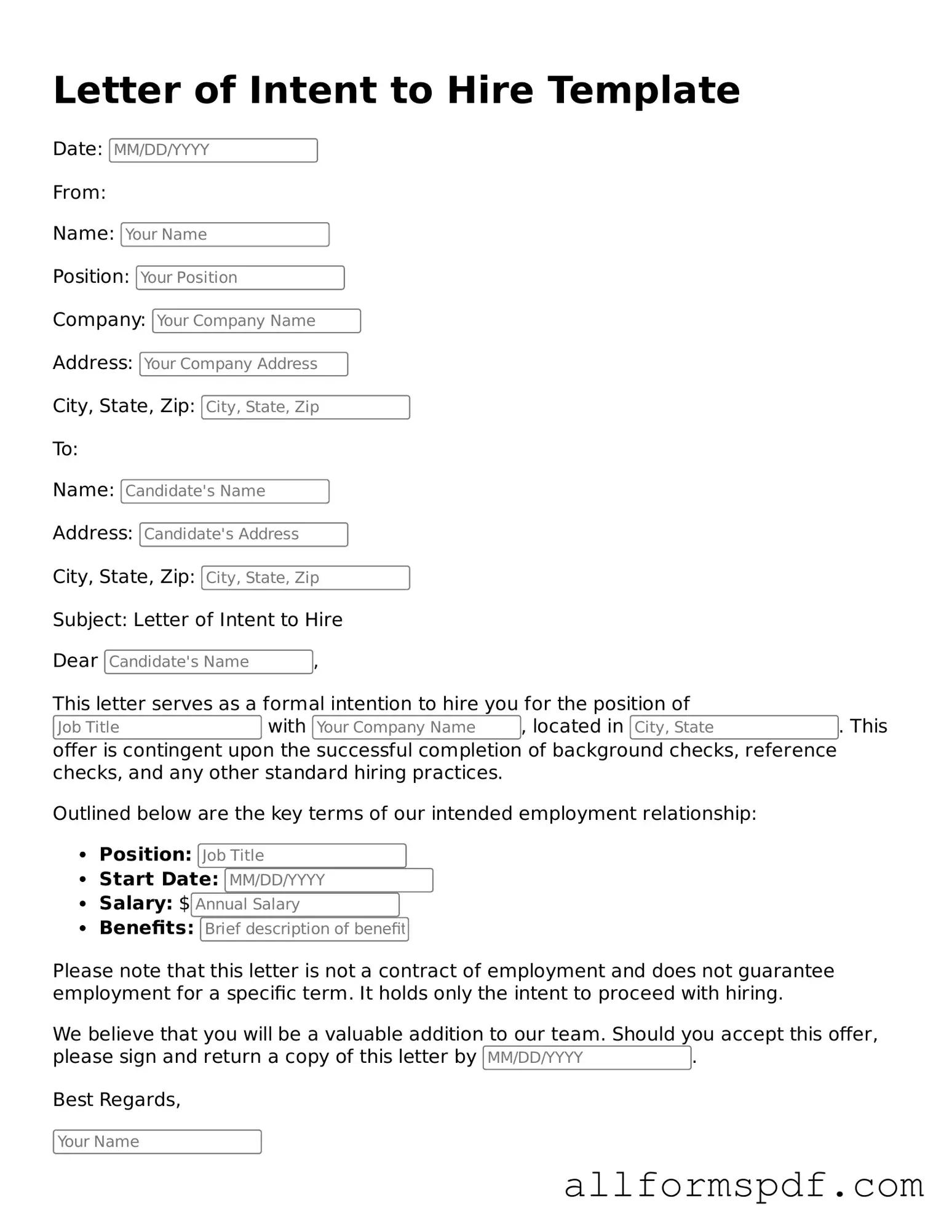Completing a Letter of Intent to Hire form can be a straightforward process, but many individuals make common mistakes that can lead to delays or complications in the hiring process. One prevalent error is failing to provide complete contact information. When applicants neglect to include their phone number or email address, it becomes challenging for employers to reach them for follow-up discussions or interviews.
Another frequent mistake involves overlooking the job title or position for which one is applying. Clarity is crucial; if the job title is missing or incorrect, it may cause confusion for the hiring team. This simple oversight can signal a lack of attention to detail, potentially impacting the applicant's chances of being considered for the role.
Additionally, many applicants fail to tailor their Letter of Intent to the specific job or organization. A generic letter that does not address the unique aspects of the position or the company may not resonate with hiring managers. Personalization demonstrates genuine interest and can set an applicant apart from others who submit boilerplate letters.
Another common mistake is neglecting to highlight relevant skills and experiences. While the form may have limited space, applicants should prioritize their qualifications that align with the job description. This omission can result in missed opportunities to showcase how one’s background fits the needs of the employer.
Some individuals also forget to proofread their submissions. Spelling and grammatical errors can undermine an applicant's professionalism. A well-written letter reflects careful preparation and respect for the hiring process, while errors can create a negative impression.
Moreover, failing to sign the Letter of Intent can be a significant oversight. A handwritten signature adds a personal touch and signifies commitment to the application. Without it, the form may appear incomplete, leading to unnecessary complications.
Another mistake is not adhering to submission guidelines. Each organization may have specific instructions regarding format, length, or delivery method. Ignoring these guidelines can result in the form being dismissed outright, regardless of the applicant's qualifications.
Some applicants also underestimate the importance of including a closing statement. A strong conclusion reinforces enthusiasm for the position and invites further communication. A lack of a closing statement can leave the letter feeling abrupt and unfinished.
Finally, individuals may neglect to follow up after submitting their Letter of Intent. A polite inquiry can demonstrate continued interest in the position and keep the applicant on the radar of the hiring team. Following up is often a missed opportunity to further engage with potential employers.
